Sitting atop empty acres in the heart of the mystic Thar Desert in Rajasthan, India, sits The Rajkumari Ratnavati Girl’s School – a fantastical oval sandstone structure that blends seamlessly into the arid landscape. Set to open in July 2021, the school will serve more than 400 girls, from kindergarten to class 10, that live below the poverty line in the region where female literacy barely touches 36 percent.
Standing as a beacon in its desert kingdom of Jaisalmer, The Rajkumari Ratnavati Girl’s School was built to improve the lives of the community: Local craftsmen—often the fathers of the girls—built the school using local sandstone and soon, two more structures will be erected: The Medha – a performance and art exhibition space with a library and museum, and The Women’s Cooperative where local artisans will teach mothers and other women weaving and embroidery techniques from the region.
The complex of three buildings will be known as the GYAAN Center. The GYAAN Center will equip young women with the tools to further their education and independence as well as raise awareness surrounding the issues faced by women in India on a global scale. Since the GYAAN Center is designed by a woman for women, Kellogg looked at feminine symbols across cultures when starting the design process – specifically symbols of strength, landing on a structure of three ovals to represent the power of femininity and infinity.
From above, the breathtaking ellipse structure blends seamlessly into the planes of sand-dunes in the region of Jaisalmer, with striking curved walls reminiscent of Rajasthan’s famous forts. Sustainability was of utmost importance to Kellogg and her team, who designed the GYAAN Center pro bono and worked entirely with all local craftsmen to build the first structure – The Rajkumari Ratnavati Girl’s School – out of hand-carved Jaisalmer sandstone.
Inside the school, visitors are greeted by a sweeping staircase and a wall decorated with diyas, small stone flower medallions signifying each classroom and the donors for the project. Winding corridors lead you to classrooms, a computer center and a sprawling terrace, all donned with furniture made locally out of rosewood with classic Charpai woven seating.
A parapet wall is also featured as a reinvention of the Jallis, screen walls traditionally used to hide women for privacy. The design team followed the local ancient water harvesting techniques to maximize the rainwater and recycle brown water in the school. While the building is oriented to maximize the prevailing wind and keep maximum sunlight out, the team also employed solar panels for the lighting and fans in the building.
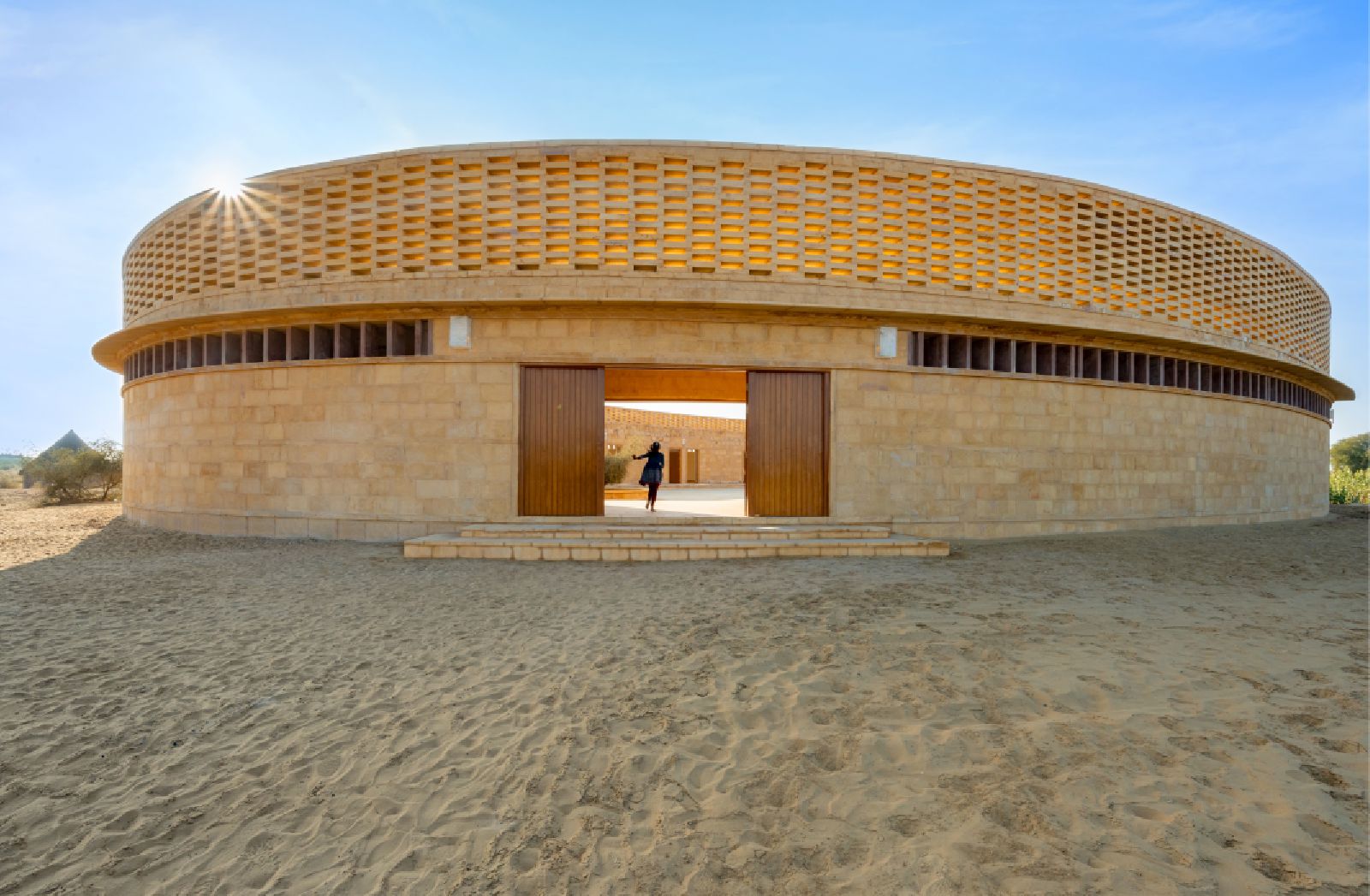
Photo © Vinay Panjwani 
Photo © Vinay Panjwani
A solar canopy on the roof with the metal framework doubles as a jungle gym with seesaws, swings and monkey bars for the girls. Both the solar panel canopy and Jallis keep the heat out and the elliptical shape of the structure also helps bring aspects of sustainability creating a cooling panel of airflow, in addition to passive solar cooling where temperatures peak close to 120 degrees.
At the GYAAN Center, the wall allows air to flow through the building and keep the sun and sand out. A central structure weaves together The Rajkumari Ratnavati Girl’s School and The Women’s Cooperative, representing a blending of generations. Famed Indian fashion designer Sabyasachi Mukherjee was tapped to create the uniforms for the students of The Rajkumari Ratnavati Girl’s School. Sabyasachi used Ajrak, a traditional textile from the region that is block-printed with natural dyes using a technique that predates modern history.
They were made to reflect the region’s craft heritage to highlight the beauty and power inherent to the crafts, as well as provide a better sense of community, connection and pride for their home. The GYAAN Center will invite renowned female artists, designers and education advocates to create artwork, host events and present installations. Students will learn to read, write, and develop traditional artisan skills unique to the region. While girls are receiving an education at the Girls School, mothers and other women in the region will work with local artisans at The Women’s Cooperative.
Exhibitions at The Medha will embody the importance of women’s empowerment, while drawing people to the center. The space will also periodically act as a marketplace to share the women’s creations with tourists venturing to the nearby dunes to experience the sunset. The education, independence, and empowerment women gain at the GYAAN center will, in turn, incentivize families to educate their daughters, bringing the benefit of the center full circle. Diana Kellogg Architects.
- Location: Jaisalmer, India
- Architect: Diana Kellogg Architects
- Client: CITTA (non-profit organization)
- Year: 2021
- Photographs: Vinay Panjwani, Courtesy of GO-PR

Photo © Vinay Panjwani 
Photo © Vinay Panjwani 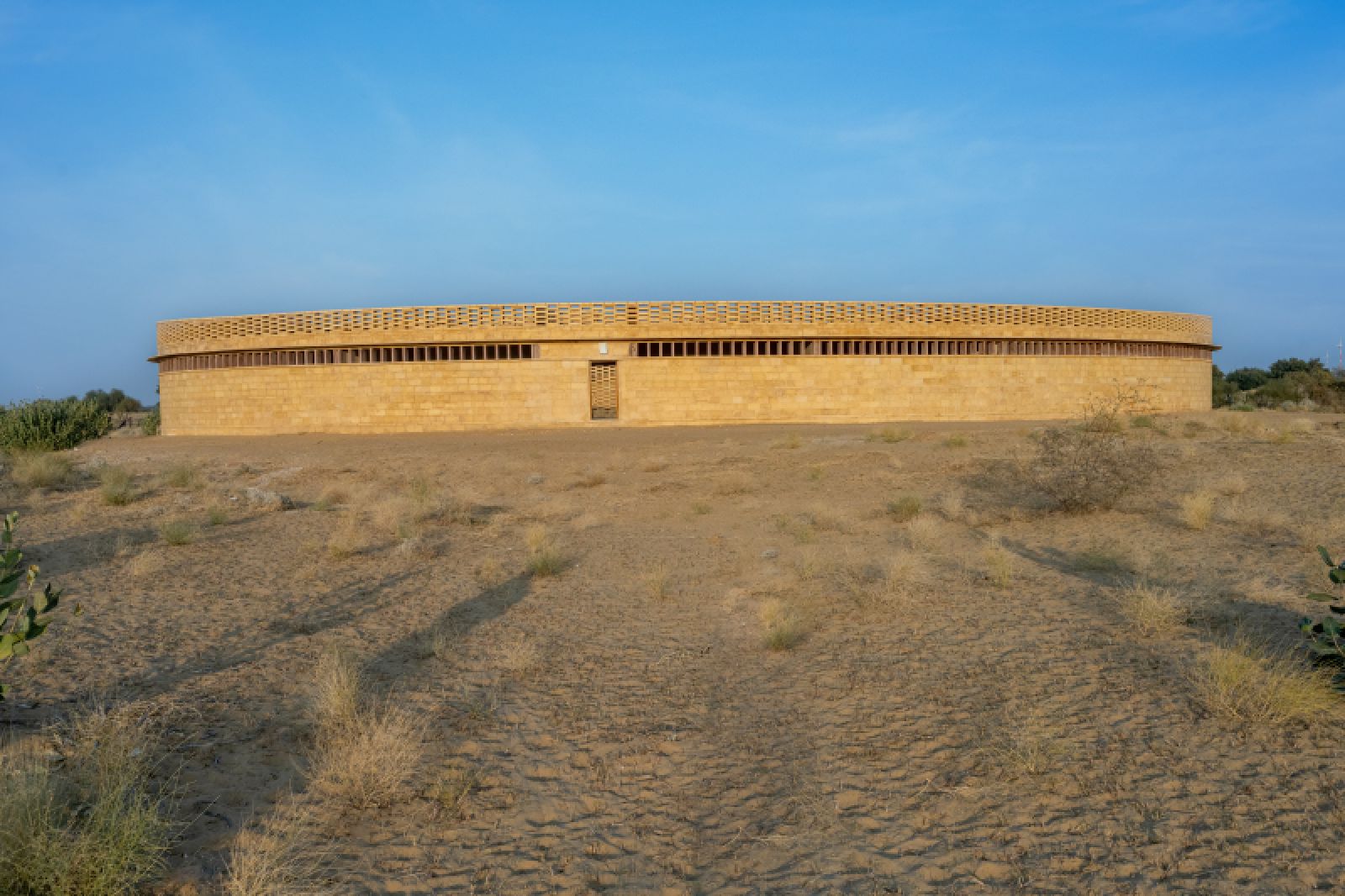
Photo © Vinay Panjwani 
Photo © Vinay Panjwani 
Photo © Vinay Panjwani 
Photo © Vinay Panjwani 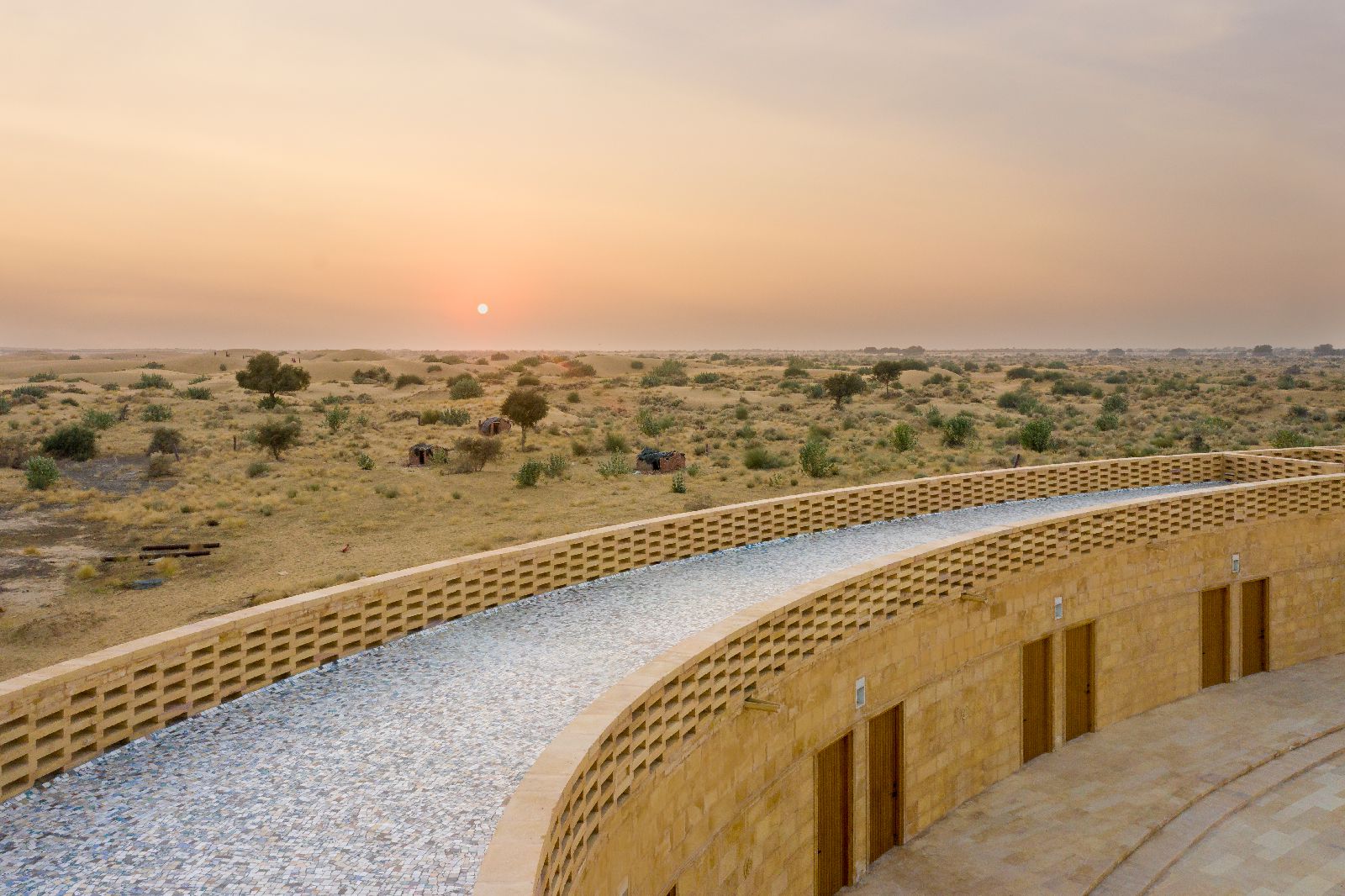
Photo © Vinay Panjwani 
Photo © Vinay Panjwani 
Photo © Vinay Panjwani 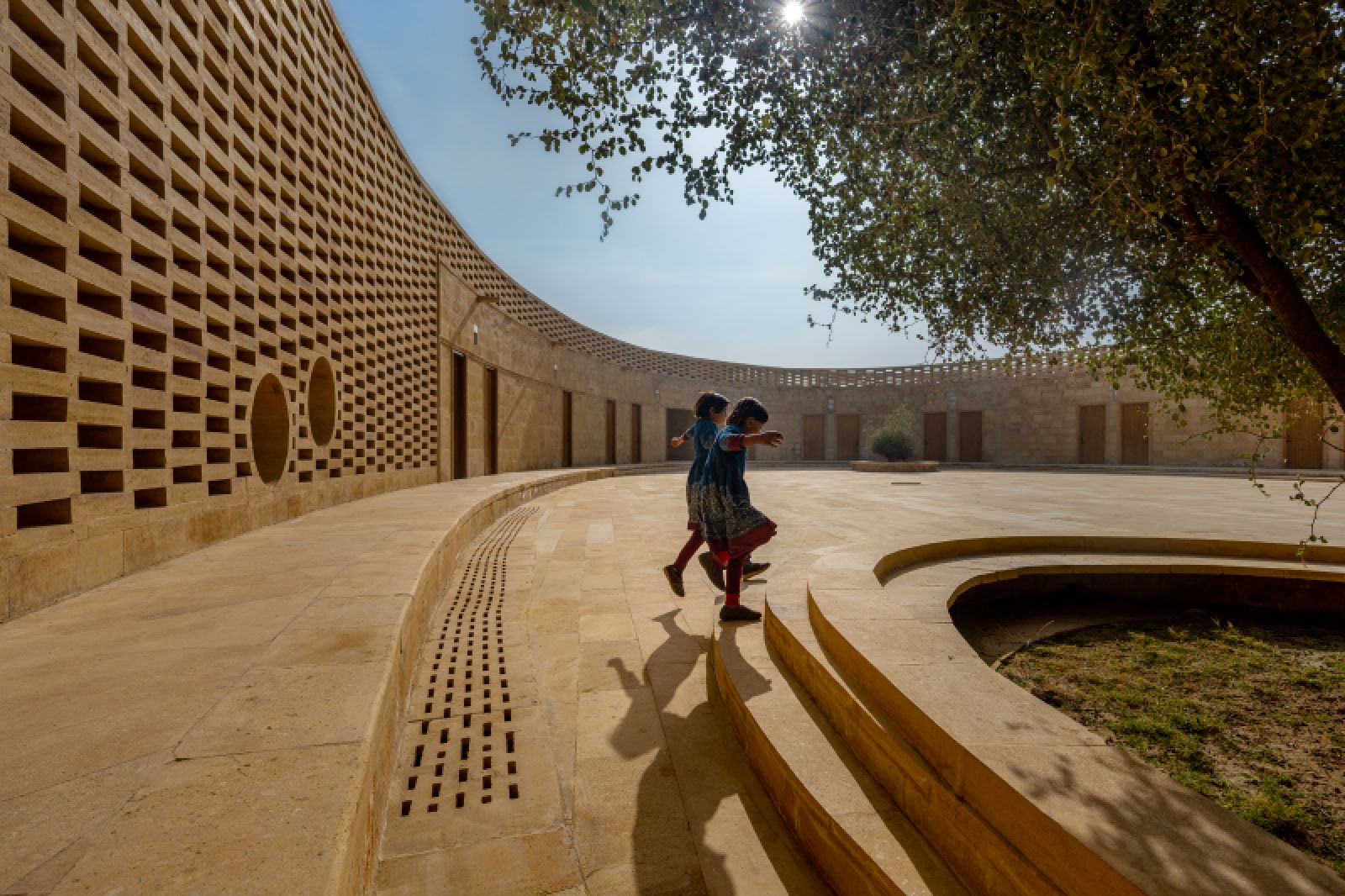
Photo © Vinay Panjwani 
Photo © Vinay Panjwani 
Photo © Vinay Panjwani 
Photo © Vinay Panjwani 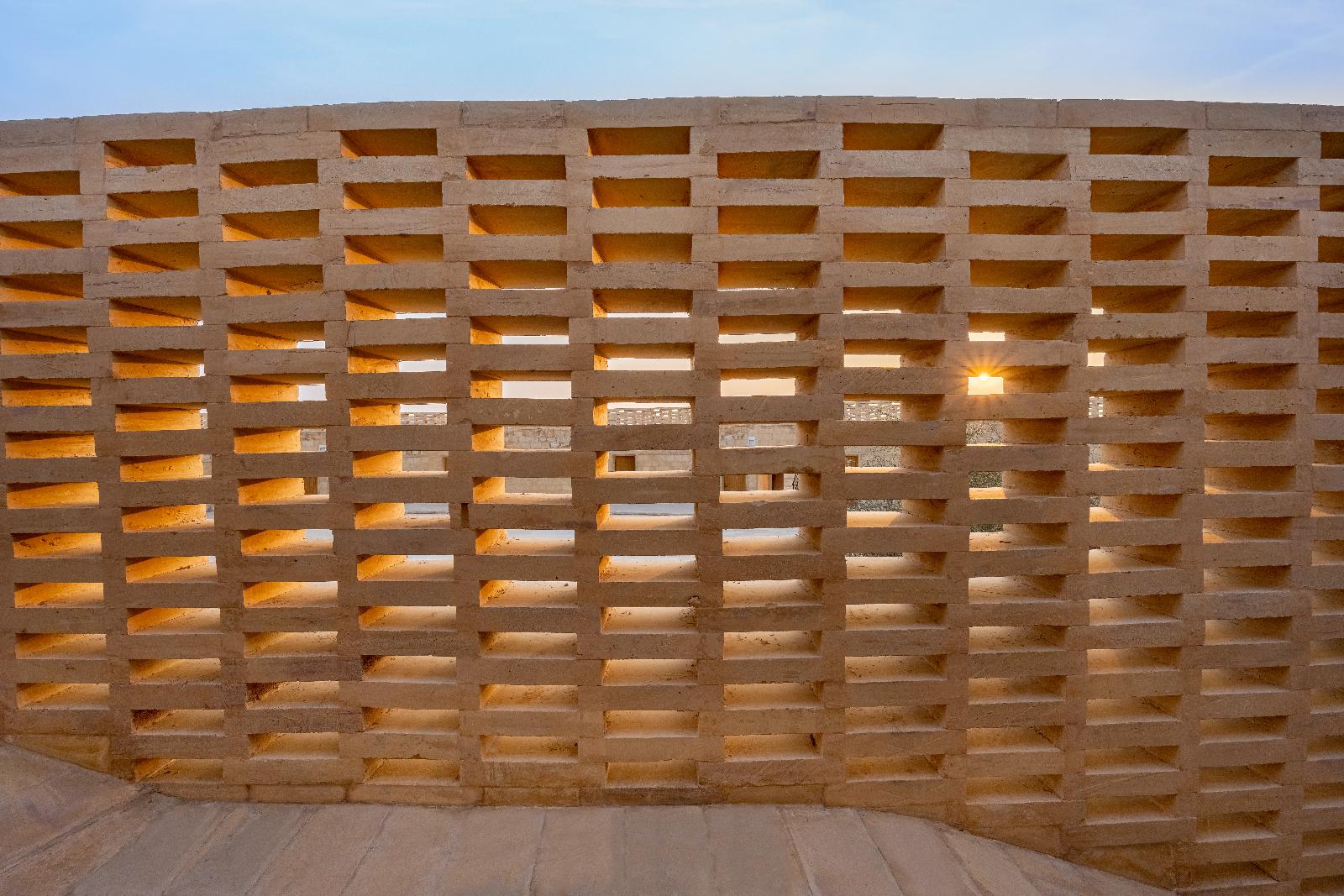
Photo © Vinay Panjwani 
Photo © Vinay Panjwani 
Photo © Vinay Panjwani 
Photo © Vinay Panjwani 
Photo © Vinay Panjwani

